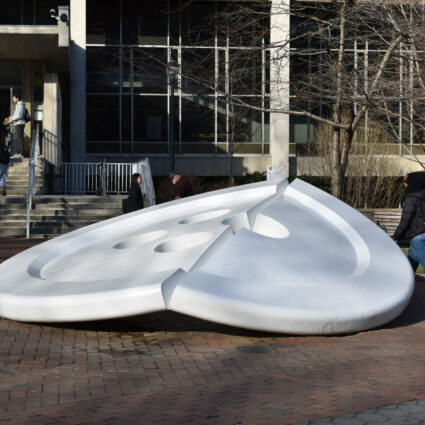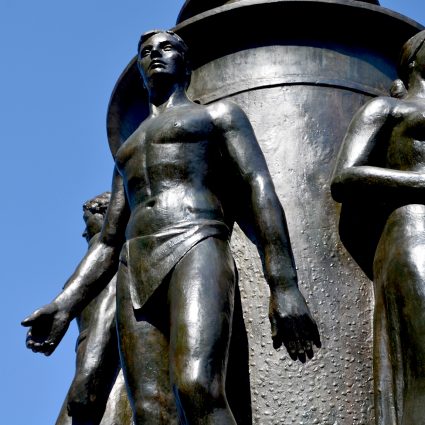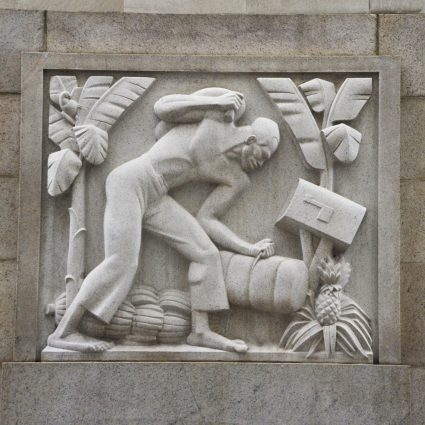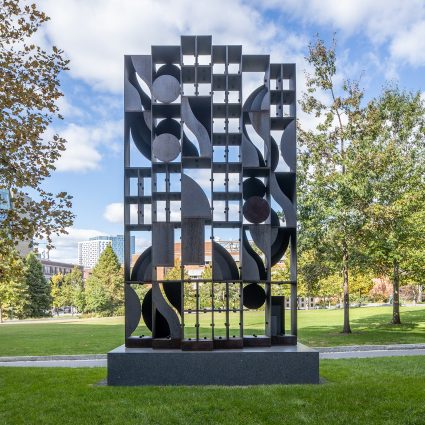The Sardinian artist Constantino Nivola was building sand castles with his children on a Long Island beach when he conceived a new kind of sculpture: bas-reliefs that would be molded in damp sand and then cast in concrete. Both Family of Man (1961) and Dedicated to the American Secretary (1970) – another work by Nivola at 4th and Market Streets – were created using this technique.
Nivola’s bas-reliefs typically include a multitude of abstract forms that suggest images from the human and natural world.
Nivola trained in masonry and ornamental stucco work before winning a scholarship to the Institute of Art in Monza, Italy. He had a lifelong interest in the relationships among art, architecture, and landscape. Moving to the United States in 1939, he established himself as a painter, graphic designer, and sculptor.
Commissioned by the University of Pennsylvania, Family of Man consists of two separate reliefs facing outward on either side of the Van Pelt Library’s front steps. Nivola’s bas-reliefs typically include a multitude of abstract forms that suggest images from the human and natural world. For many observers, they also bring to mind ancient artifacts. Because particles of sand adhere to the surface during the molding process, the reliefs have an intriguing grainy texture that changes gradually over time.
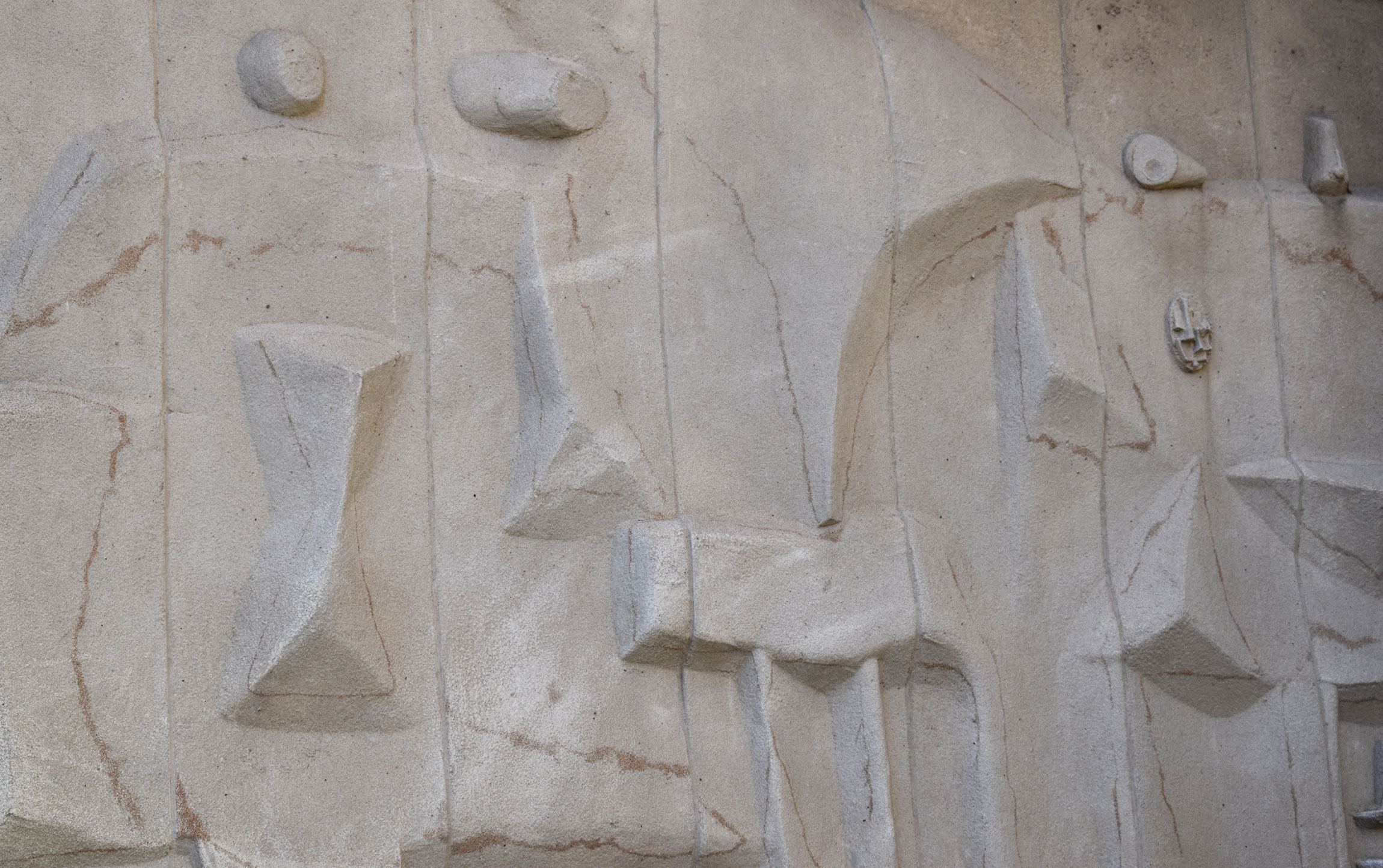
Adapted from Public Art in Philadelphia by Penny Balkin Bach (Temple University Press, Philadelphia, 1992).
RESOURCES:
- The Crumbling Art of Costantino Nivola, a Picasso for the People (Atlas Obscura)
- When Reviving a Forgotten Sculptor’s Reputation Is a Family Affair (New York Times)
Enjoying this content?
Click here to donate and help us continue to tell the story of public art in Philadelphia.
This artwork is part of the Around University City tour
